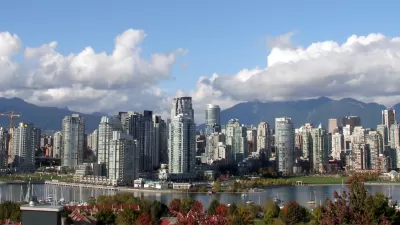The phrase "everything on the street" captures UN-Habitat head Joan Clos's approach to urbanization. In the wake of Habitat III, who is the man behind the conference's "New Urban Agenda"?

In Quito, Ecuador, the UN's Habitat III conference has just adopted a "New Urban Agenda": a set of recommendations to guide the world's cities as they urbanize. Here, Gregory Scruggs profiles the man in charge: executive director Joan Clos. The New Urban Agenda "strongly reflects his views on cities with its calls for compact urban cores, transit-oriented development, reining in sprawl and robust public space."
Clos, the former mayor of Barcelona, takes a sunny view on cities. However, "In many countries, urbanization is seen primarily as a problem: the cause of poverty, malnutrition, air pollution, infant mortality and low life expectancy. [...] The challenge Clos faces is that for many of the 193 U. N. member states, the idea of building skyscraper tower blocks and highways remains plenty appealing. The West did it, after all."
Scruggs, who has followed the lead-up to Habitat III this year, "asked Clos what four words could neatly encapsulate his vision for the New Urban Agenda. His response: 'Everything on the street.'"
Through a deep dive on Clos's background, history in politics, and personal views on planning, a picture emerges of a man whose faith in cities' positive potential is tempered by a sense of the politically feasible. "He says people are being naïve when they compare parks to a city's 'lungs,' or streets to a city's 'veins,' or describe small interventions as 'urban acupuncture.'" Instead, says Clos, "The city is a political construction. It's about people living together and creating coalitions to defend their own agendas."
FULL STORY: A Clos-up view on urbanization

Study: Maui’s Plan to Convert Vacation Rentals to Long-Term Housing Could Cause Nearly $1 Billion Economic Loss
The plan would reduce visitor accommodation by 25,% resulting in 1,900 jobs lost.

North Texas Transit Leaders Tout Benefits of TOD for Growing Region
At a summit focused on transit-oriented development, policymakers discussed how North Texas’ expanded light rail system can serve as a tool for economic growth.

Why Should We Subsidize Public Transportation?
Many public transit agencies face financial stress due to rising costs, declining fare revenue, and declining subsidies. Transit advocates must provide a strong business case for increasing public transit funding.

How to Make US Trains Faster
Changes to boarding platforms and a switch to electric trains could improve U.S. passenger rail service without the added cost of high-speed rail.

Columbia’s Revitalized ‘Loop’ Is a Hub for Local Entrepreneurs
A focus on small businesses is helping a commercial corridor in Columbia, Missouri thrive.

Invasive Insect Threatens Minnesota’s Ash Forests
The Emerald Ash Borer is a rapidly spreading invasive pest threatening Minnesota’s ash trees, and homeowners are encouraged to plant diverse replacement species, avoid moving ash firewood, and monitor for signs of infestation.
Urban Design for Planners 1: Software Tools
This six-course series explores essential urban design concepts using open source software and equips planners with the tools they need to participate fully in the urban design process.
Planning for Universal Design
Learn the tools for implementing Universal Design in planning regulations.
City of Santa Clarita
Ascent Environmental
Institute for Housing and Urban Development Studies (IHS)
City of Grandview
Harvard GSD Executive Education
Toledo-Lucas County Plan Commissions
Salt Lake City
NYU Wagner Graduate School of Public Service




























